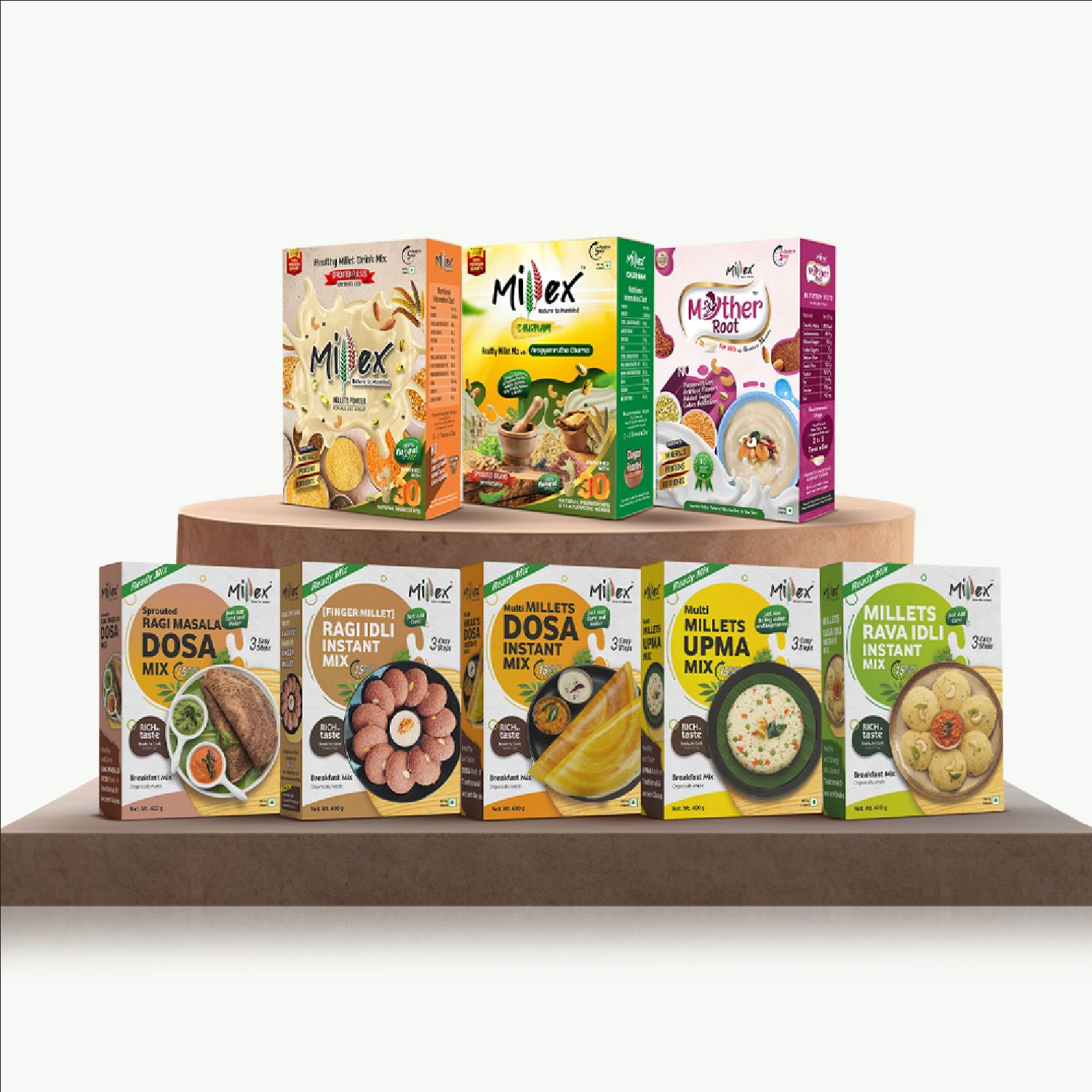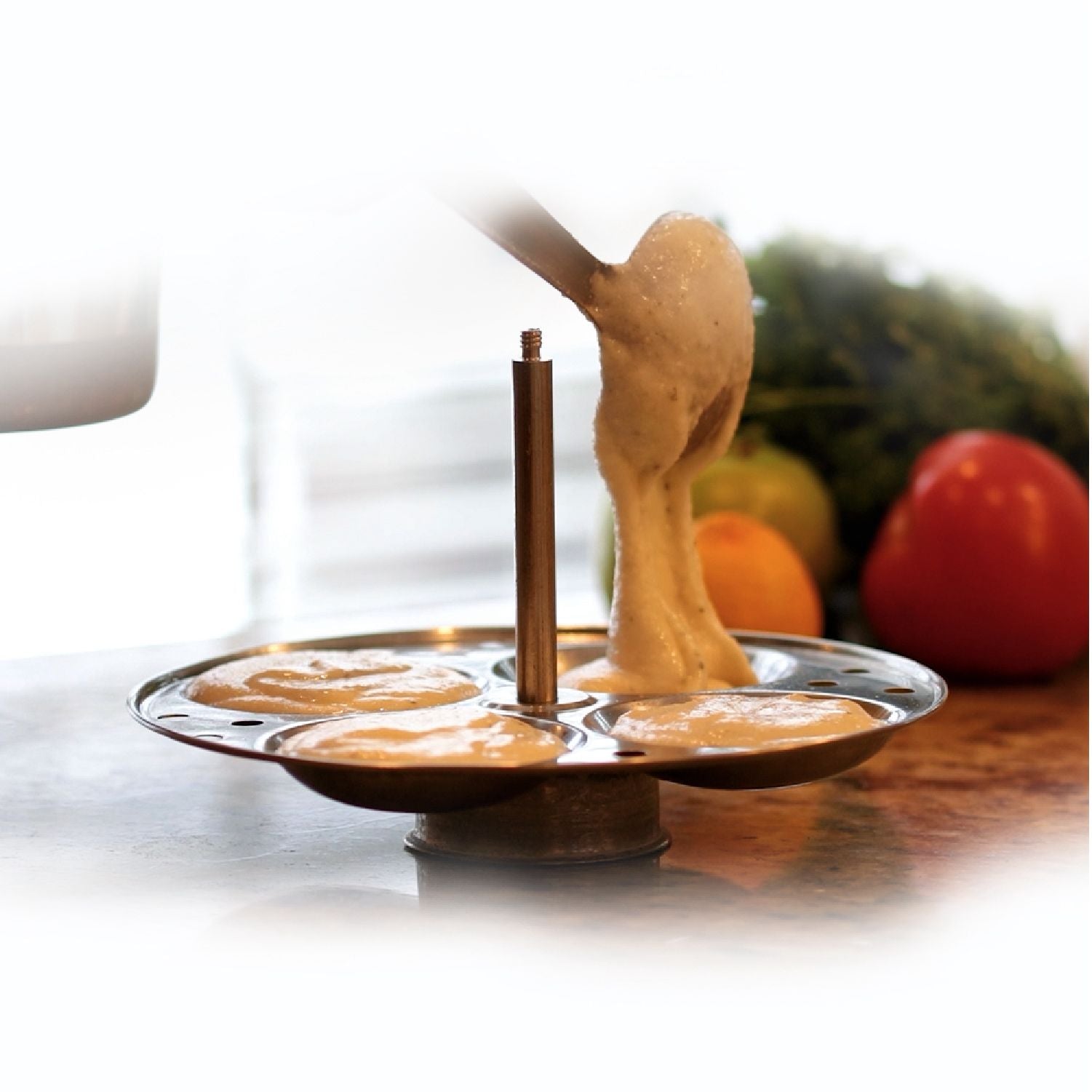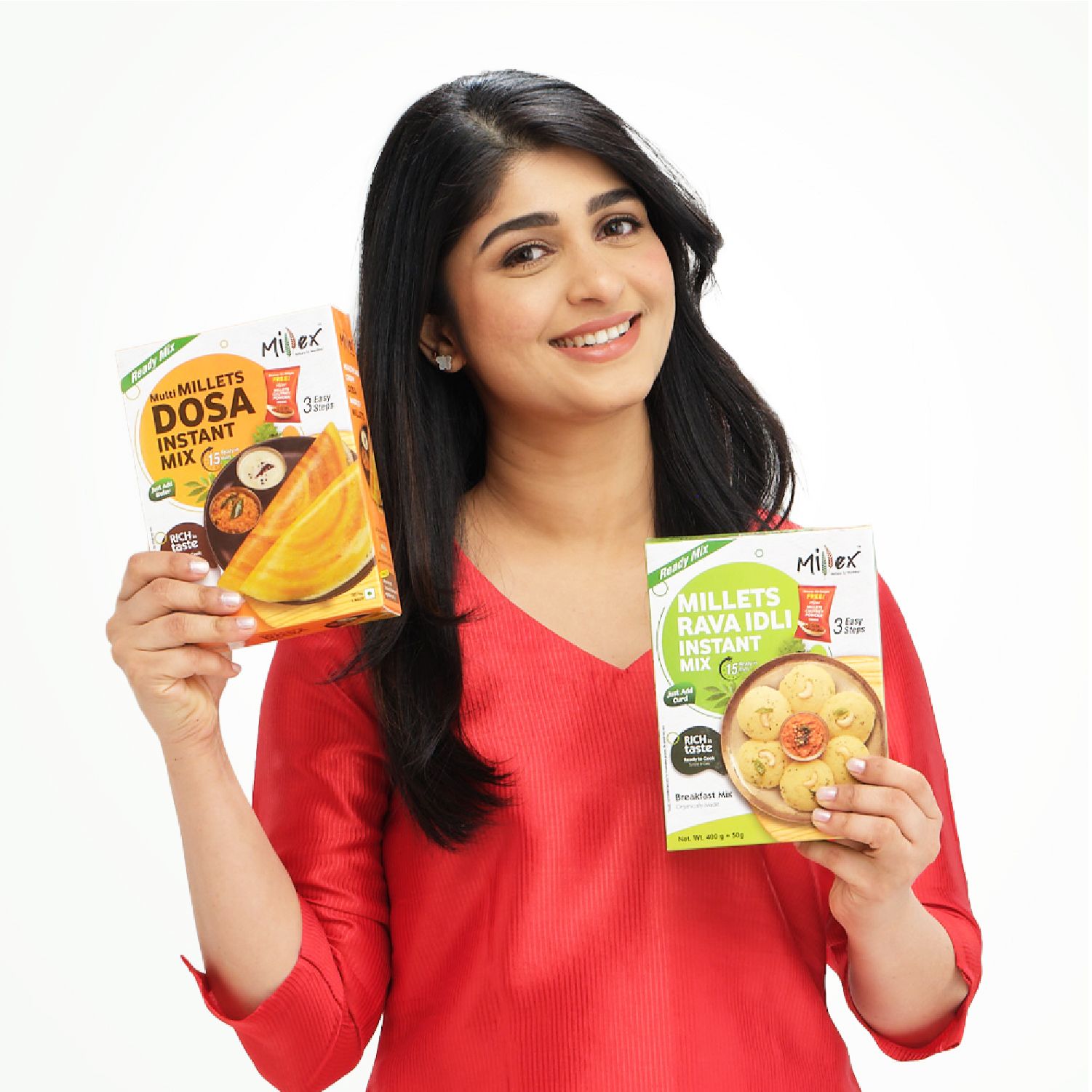Millets are nature’s gift for fitness and balance — rich in fibre, protein, and nutrients that promote healthy weight loss.Millex makes it effortless to include 10 types of wholesome millets in your diet through its convenient health drink mixes.Enjoy natural energy, improved metabolism, and lasting fullness with Millex — your smart step toward sustainable wellness.The feeling of fullness and energised sensations one has with the right kind of foods in one’s diet makes losing weight easier. Millets are fast gaining popularity among fitness enthusiasts due to their richness in fibre, protein, and essential nutrients that help in maintaining a healthy metabolism. The best millets for weight loss bring their own set of benefits, making them a smart addition to everyday meals.

Millex takes this goodness a step further with its Millex Millet Health Drink Mix With Churnam and Millex Healthy Millet Mix Without Churnam, made using 10 types of millets. These blends make it easy to eat healthy, taste great, and reward naturally every single day.
Understanding Millets
Millets are small-grained, ancient cereals that belong to the Poaceae grass family. These grains have been in use for millennia in most Asian and African regions due to their preference for arid conditions and minimal water usage. For many rural communities, they served as staple foods long before refined grain foods gained popularity. Their resilience and nutrient density make them a sustainable alternative for the modern diet.
With the shift towards healthier and whole-grain diets, millet is gaining popularity throughout the world. They are gluten-free, rich in fibre, and a source of plant-based protein, thus fitting for both vegetarian and gluten-intolerant individuals. Their mild, nutty flavour goes well with a wide range of offerings, from porridge and pulao to energy bars and smoothies.
Nutritional Profile of Millets
Millets are packed with nutrients essential for daily health and vitality. One serving of a cup of cooked millet provides approximately 207 calories, 6 grams of protein, 41 grams of carbohydrates, and 2.2 grams of dietary fibre. They also provide much-needed minerals like iron, magnesium, phosphorus, and folate, which maintain strong bones, healthy red blood cells, and balanced metabolism.

Finger millet contains a high amount of calcium and is highly recommended for bone density enhancement. Proso and Kodo millets are good sources of B-complex vitamins, which help in the conversion of food into energy. Antioxidants in millets include phenolic acids, flavonoids, tannins, and phytates that protect cells against oxidative damage, enhancing immunity and improving metabolism.
Regular consumption of millets improves digestion, reduces cholesterol levels, and gives you sustained energy release, and hence they are very good for people intending to lose or manage their weight.
How Millets Help with Weight Loss
Millets combine high fibre, quality protein, and low calorie density, making them an excellent addition to a weight loss diet. Their nutritional make-up facilitates burning fat in the body while sustaining its muscles.
1. Promotes Satiety
The dense fibre structure in millets for weight loss in India slows down digestion, hence making one feel full for a longer period. Reduced hunger naturally limits overeating and snacking, thereby supporting calorie control.
2. Stabilises Blood Sugar
The low glycemic index of millets prevents sugar spikes and steep falls in blood sugar. Steady glucose levels reduce cravings and avert insulin resistance, which is linked to fat accumulation.
3. Improves Metabolism
Millet proteins help in muscle repair and build lean muscle tissue, increasing metabolic activity. The increased metabolism means the body will burn more calories throughout the day.
4. Supports Gut Health
The prebiotic fibre in millets feeds good bacteria in the gut, aiding digestion and absorption. A healthy gut contributes to keeping your body weight just right as well as maintaining general well-being.
5. Reduces Inflammation
Antioxidants such as ferulic acid and catechins in millets help fight against inflammation and oxidative stress. This will reduce water retention and bloating that is generally mistaken for fat gain.
Top 10 Millets for Weight Loss
1. Foxtail Millet
Foxtail millet is rich in complex carbohydrates that steadily give energy without elevating blood sugar. The high fibre content aids bowel regularity and prevents constipation. It contains minerals like iron and magnesium, which improve oxygen circulation and support metabolism. Try adding foxtail millet into salads, soups, or making soft upma for breakfast. A lightly spiced foxtail millet khichdi can serve well at lunchtime.
2. Pearl Millet (Bajra)
One of the oldest cultivated grains in India, pearl millet is rich in iron, protein, and amino acids that enhance stamina. Bajra aids digestion and protects the cardiovascular system through its magnesium content. The earthy flavour is suitable for traditional rotis, porridges, and spiced khichdis. It can be used to replace regular wheat rotis, thereby increasing the intake of fibre by many folds and aiding post-meal satiety.
3. Finger Millet (Ragi)
Ragi or finger millet is rich in calcium and amino acids such as tryptophan and methionine, which help rebuild muscles and mental health. It keeps you fuller for longer, controlling sugar cravings. This millet works beautifully in breakfast dishes such as ragi dosa, malted drinks, or even for healthy weight loss with millet diet. A bowl of warm ragi porridge can be an energising start to a morning routine.
4. Barnyard Millet
Barnyard millet is a very good source of high-quality fibre and essential minerals, hence an ideal option for calorie-controlled diets. It digests slowly and keeps you fuller for hours. The lightness of the grain makes it nutritious for a detox diet or on fasting days. You can have fluffed barnyard millet upma or mix it with chopped veggies for a fresh salad.
5. Kodo Millet
Kodo millet aids in lowering cholesterol and improving liver function. It contains antioxidants that protect body cells and enhance digestive efficiency. This millet’s subtle taste allows it to blend easily into daily meals. It can be cooked as idlis, dosas, or pulao, and even mixed with lentils for added protein. Replacing white rice with Kodo millet can make everyday meals healthier without sacrificing taste.
6. Little Millet
Tiny in size, little millet packs in a lot of nutritional punch. It offers a good mix of protein, fibre, and minerals like iron and zinc. It helps maintain blood sugar stability and supports cardiovascular health. Little millet can replace rice in most dishes, making it suitable for pulao or stir-fried meals. It also works well in soups and energy bars for people who need quick bits on busy days.
7. Sorghum (Jowar)
Sorghum, or Jowar, aids in weight management as it regulates blood sugar levels and controls digestive functions. It contains no gluten and is rich in antioxidants. The high phosphorus content strengthens bones and tissues. You can make soft rotis with the flour or nutritious porridges. Mix with other grains for variety and taste.
8. Proso Millet
Proso millet contains lecithin, which is very good for the brain and nerves. It is light on the stomach, hence ideal for dinner meals. It provides sustained energy and regulates cholesterol. Cooked proso millet could be made into a savoury bowl with vegetables or a simple breakfast porridge with fruits and nuts. Its mild flavour blends well with both sweet and savoury courses.
9. Amaranth
Amaranth, though considered to be related to millets, is a good source of protein and an amino acid named lysine, which is rare in grains. It gives strength to your muscles and helps in repairing any damage to them. Rajgira also provides calcium and iron, which are important for maintaining bone and blood health. These can be roasted and puffed into healthy snacks, blended into pancakes, or used in ladoos for healthy eating options.
10. Brown Top Millet
Brown top millet is one of the least processed millets and contains its nutrients in the most natural form. Rich in fibre, magnesium, and phosphorus, it aids digestion and metabolism. It provides satiety, so brown top millet could be a good food for diabetic or obese patients. This millet can be prepared with porridge, salads, or bakery items. It adds a nutty flavour to any ordinary dish.

How to Cook Millets
Properly cooking millets improves both flavour and texture.
● The most common ratio for cooking millet is one cup of millet to two cups of water. One can use water or vegetable broth for cooking.
● Place them in a pan and bring them to a boil on low heat.
● As soon as the water starts to boil, turn the heat down and cover it.
● Let it simmer for about 20 minutes until all the water has been absorbed into the grains.
● Then, after cooking, fluff the millet with a fork so that the grains are separated, then cover it for another 10 minutes. This resting step lets the moisture redistribute evenly, producing a soft, fluffy result.
You can add flavour with spices, herbs, or a squeeze of lemon juice. For savoury dishes, replace the water with vegetable broth. For sweet porridges, cook the millet in milk and top with fruits or honey.
Millex - Your Daily Dose of Health, Powered by the Goodness of 10 Millets!
Millets have now become the smart and whole food choice for any person looking to lose weight as well as achieve long-term wellness. With high fibre, rich protein, and a nutrient-packed profile, millets naturally support better digestion, energy and metabolism.

Millex brings the power of these low-calorie millet varieties for fat loss to your table through its Millex Millet Health Drink Mix with Churnam and Millex Healthy Millet Mix without Churnam, both uniquely crafted with 10 nutritious varieties of millets. These convenient and flavoursome blends make it easy to enjoy all-round nourishment every day.
Start your healthy transformation with Millex and taste the perfect balance of health and flavour in every sip and bite.
-
What makes millets good for weight loss?
Millets are rich in fibre and protein, helping you stay full longer, reduce hunger, and improve metabolism. -
Which millet is best for weight loss?
Foxtail, ragi, barnyard, and pearl millets are among the top choices for effective weight management. -
How do Millex Millet Mixes help in weight loss?
Millex mixes combine 10 nutrient-rich millets that support digestion, boost energy, and promote fat burning. -
Are Millex products suitable for everyday use?
Yes, both Millex Health Drink Mix and Healthy Millet Mix can be consumed daily for balanced nutrition. -
Can people with diabetes consume millets?
Yes. Millets have a low glycemic index, making them safe and beneficial for people managing blood sugar levels. -
Are Millex products gluten-free?
Yes, Millex Millet Mixes are 100% gluten-free and suitable for gluten-intolerant individuals. -
How can I include Millex mixes in my diet?
Mix them into milk or water for a quick drink, or add to porridge, smoothies, or breakfast bowls. -
What is the difference between Millex with Churnam and without Churnam?
The “With Churnam” variant includes Ayurvedic herbs for extra vitality, while “Without Churnam” is pure millet goodness. -
Can children consume Millex Millet Mix?
Yes, Millex products are natural and nutritious, making them ideal for children and adults alike. -
Where can I buy Millex Millet Health Drink Mix?
You can purchase it directly from Millex.in or on leading eCommerce platforms.





